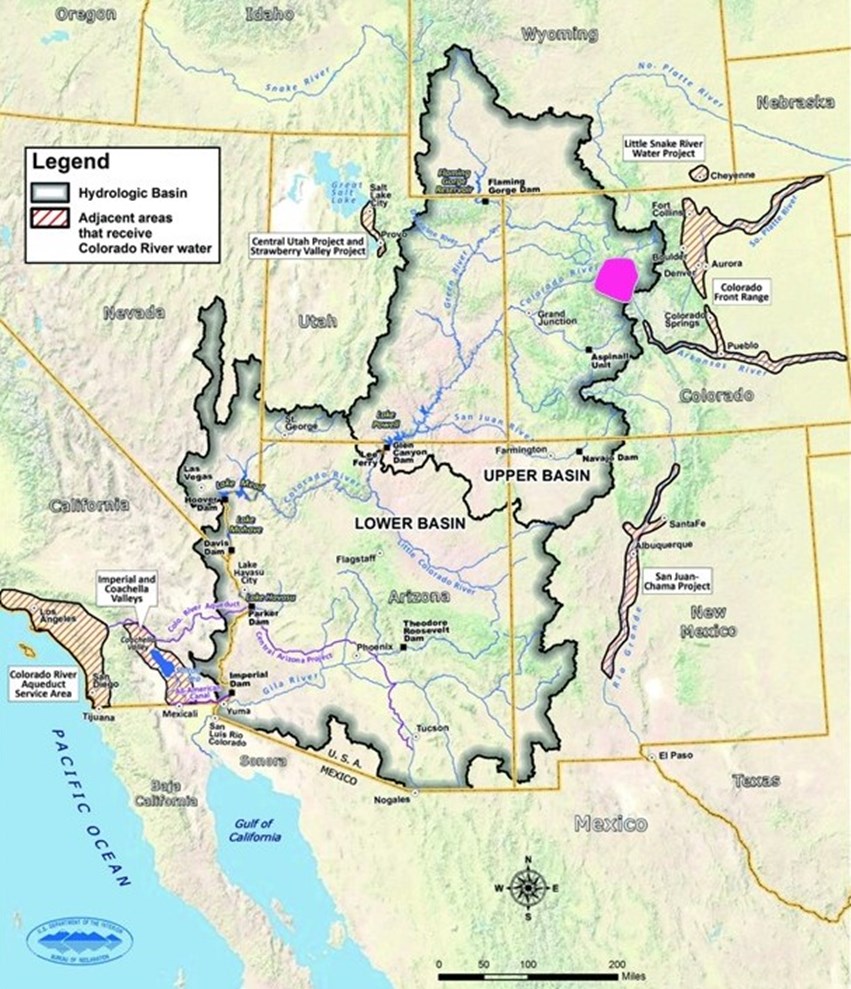The Colorado River connects us to 40 million people in the American West.
The Colorado River supports 40 million people as it flows through seven U.S. states and Mexico. The dark black line in the map below outlines the Colorado River watershed. Take a closer look and you will see that the largest cities in the west rely on water from the Colorado River, but are not necessarily in the watershed.
As an important headwater to the Colorado River, the Roaring Fork River contributes up to 12% of the annual flow of the Colorado River but the Roaring Fork Watershed is less than 0.5% of the Colorado River Basin land area. This statistic is illustrated well in the map below, where the Roaring Fork Watershed is outlined in pink, within the greater Colorado River Basin.

(Original map credit U.S. Department of the Interior Bureau of Reclamation)
The Colorado River, riddled with history and majestic scenery, has many challenges as it flows through the arid west. One of those being that the Colorado River has not consistently reached the ocean in almost 50 years. But in 2014, a historic agreement between the United States and Mexico sent a pulse flow to the delta, mimicking spring flows which are the highest flows of the year, as snow in the high country melts. Dry stream beds once again ran with water, and dormant seeds started to bloom. The environmental and social impacts of this pulse flow are still being studied.
To learn more about the 2014 pulse flow please click on one of the following links:
Minute 319 Colorado River Pulse Flow, Progress Reports (The University of Arizona)
"The Day We Set the Colorado Free" by Rowan Jacobsen (Outside Magazine)
"A Sacred Reunion: The Colorado River Returns to the Sea" by Sandra Postel (National Geographic)
Delta Dawn: Paddling a River Run Free by Peter McBride